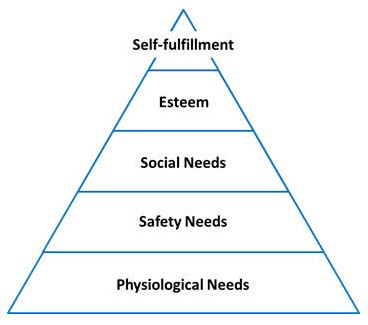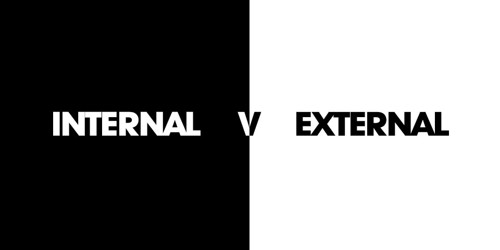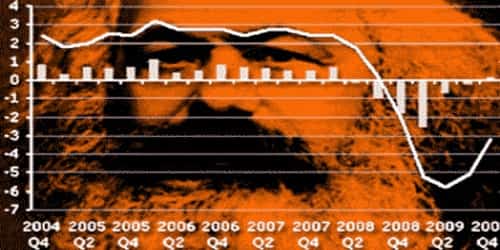Motivation is defined as the process that initiates, guides and maintains goal-oriented behaviors. Motivation is what causes us to act, whether it is getting a glass of water to reduce thirst or reading a book to gain knowledge.
According to Arnold, there are 3 components of motivation:
- direction – what a person is trying to do
- effort – how hard a person is trying
- persistence – how long a person keeps on trying
Direction might point the way, but effort is what establishes momentum, and persistence determines how far the change is carried (in time as well as in magnitude of outcome). Hence, Arnold’s 3 components are suitable to describe the level of motivation a person or a team shows. This concept does not give any reasons for motivation.
Furthermore, literature distinguishes 2 types of factors that influence motivation:
- Intrinsic – self generated factors (responsibility, freedom to act, scope to use and develop skills and abilities, interesting and challenging work, opportunities for advancement) – they have a deeper and longer-term effect
- Extrinsic – what is done for people to motivate them (rewards, promotion, punishment) – they have an immediate and powerful effect, but won’t necessarily last long
In other words: Intrinsic motivation comes from a person’s internal desire to do something. Reasons may be that a particular activity gives him or her pleasure, helps to develop a particular skill of seems to be the right thing to do in moral / ethical terms. Extrinsic motivation is generated by external factors that are less related to the particular task.
Most influential is the Needs (content) Theory
- All Needs theories focus on specific needs people want to satisfy. There are several theories that explain motivation as a result of these needs.
- The underlying concept is the belief that an unsatisfied need creates tension and a state of disequilibrium. To restore balance, a goal is identified that will satisfy the need and a behavior pathway to this goal is selected.
- All behavior is motivated by unsatisfied needs.
- People will be better motivated if their work experience satisfies their needs and wants.
- Needs theories distinguish between primary needs, such as food, sleep and other biological needs, and secondary psychological needs that are learned and vary by culture and by individual.
Maslows hierarchy of needs

- If a lower need is satisfied, it no longer motivates behavior; the next higher one becomes dominant. (Deficit principle)
- The five needs exist in a hierarchy. Higher needs only become important when lower needs are satisfied
- Higher-order needs provide greater motivation.
- Different people may have different priorities.
The theory helps managers to identify which particular needs are relevant for employees and thus to determine appropriate motivators.
Alderfer’s ERG Theory
Is based on Maslows Hierchy of needs; recategorizes Maslows categories of needs into three simpler and broader groups:
- Existence needs – need for material and energy exchange; basic physiological and safety needs
- Relatedness needs – transactions with human environment, process of sharing or mutuality; need for interpersonal relationships and attention; is about equivalent to Maslows social needs and part of the esteem needs
- Growth needs – people make creative or productive efforts for themselves; need for personal growth and self-development; part of Maslows esteem needs and self-fulfillment needs
On contrast to Maslow, here more than one level of needs can be relevant at the same time. There is no hierarchy; people may for instance work to fulfill their personal growth needs, whereas not al relatedness needs are fulfilled.
McClelland’s needs
Based mainly on studies of managers.
There are 3 most important needs:
- Achievement – need for competitive success measured against a personal standard of excellence
- Affiliation – need for warm, friendly relationships with others, interpersonal relationships
- Power – need to control and influence others
The hierarchy of these three groups of needs may differ from individual to individual. Hence, there are different motivators depending on a person’s high-priority needs.
Herzbergs two-factor model
There are some factors that result in satisfaction and some factors that just prevent dissatisfaction. According to Herzberg, the opposite of Satisfaction is No Satisfaction and the opposite of Dissatisfaction is No Dissatisfaction.
- Motivators – factors that really motivate people, also called satisfiers, provide intrinsic motivation
Examples for Motivators: recognition, growth and career development opportunities, responsibility, autonomy, self-fulfillment - Hygiene factors – dissatisfiers; their absence would demotivate people, but their presence not necessarily improves motivation; essentially describe the environment, little effect on positive job attitudes
Examples for Hygiene factors: salary, work conditions, relationships with superios and peers, company policy
Process cognitive theory
- Emphasis on psychological processes that effect motivation and on basic needs
- Concerned with people’s perceptions and the way they interpret and understand it
- People will be highly motivated if they can control the means to attain their goals
Expectancy theory
By Vroom
Value, instrumentality (belief that if we do one thing it will lead to another), expectancy (probability that action or effort will lead to an outcome)
Strength of expectations may be based on past experiences
Motivation is only likely when a clearly perceived relationship exists between performance and an outcome that is seen as a means of satisfying needs
Porter and Lawler developed this theory into a model suggesting that there are two factors determining the effort people put into their jobs:
- Value of rewards to individuals in so far as they satisfy their needs
- Probability that rewards depend on effort, as perceived by individuals, their expectation about relationships between effort and reward
Two additional variables:
- Ability – individual characteristics and skills
- Role perceptions – what he wants to do or thinks he is required to do, good if they correspond with the viewpoint of the organisation
Goal theory
By Latham and Locke
Motivation and performance are higher when individuals are set specific goals
Goals have to be difficult but accepted
Feedback on performance allows the individual to track how well he or she is doing in relation to the goal
Participation in goal setting is important – goals need to be agreed
As long as they are accepted – demanding goals lead to better performance than easy goals
Reactance theory
By Brehm
Individuals are not passive receivers but responders. They seek to reduce uncertainty by seeking control about factors influencing rewards
Management initiatives about motivation will only work if they make sense to the people in terms of their own values and orientation.
There are four important elements to reactance theory: perceived freedom, threat to freedom, reactance, and restoration of freedom. Freedom is not an abstract consideration, but rather a feeling associated with real behaviors, including actions, emotions, and attitudes.
Equity theory
By Adams
- Perceptions people have about how they are being treated as compared with others
- Involves feelings and perceptions, is always a comparative process
- People will work better if they are treated equitably
- Two forms of equity:
Distributive – fairness people feel they are rewarded in accordance with their contribution and in comparison with others
Procedural – perceptions of employees about fairness of company procedures - We hope/expect that the inputs we give into our job equal the outputs we get
Other theories
Behavioral theory (Skinner): behavior is learnt from experience, learning takes place mainly through reinforcement
Social learning theory (Bandura) significance of reinforcement as a determinant of future behavior, importance of internal psychological factors, esp. Expectancies
Attribution theory (Guest) explanation of performance after we have invested considerable effort and motivation in a task; 4 types of explanations: ability, effort, task difficulty, luck; motivation depends on the factor used to explain success or failure
Role Modeling: people can be motivated if they have the chance to model their own behavior on a ‘role model’, i.e. someone who’s working or leadership style serves as an inspiration and a positive example.
Source:
http://www.themanager.org
http://www.wikipedia.org
















